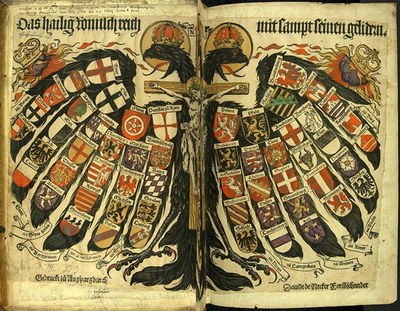Jost de Negker, Das hailig römisch reich mit sampt seinen gelidern (The Holy Roman Empire and all its Members), 1510
by
—
last modified
2022-10-24T12:00:10+02:00
Wikimedia Commons, public domain
Contributors: Jost de Negker (1485–1544)
Wikimedia Commons, public domain
Jost de Negker (1485–1544), Das hailig römisch reich mit sampt seinen gelidern (The Holy Roman Empire and all its Members), wood cut, 1510; source: Wikimedia Commons https://commons.wikimedia.org/wiki/File:Quaterionenadler_David_de_Negker.jpg, public domain.

